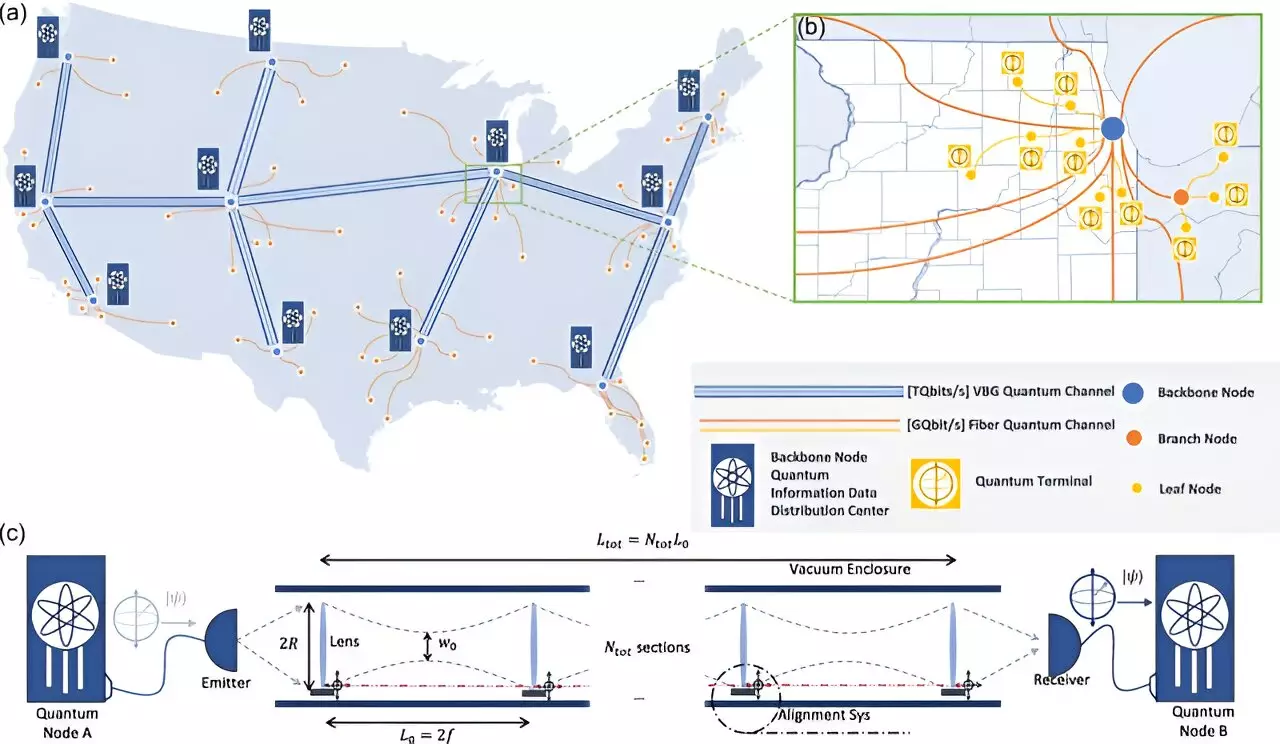The era of quantum computing is not only one of immense promise but also one of groundbreaking potential that could fundamentally transform various sectors, from cybersecurity to advanced data processing. At the heart of this transformation lies the concept of a quantum internet—a network that facilitates the ultra-secure transmission of information through quantum entanglement. Researchers at the University of Chicago’s Pritzker School of Molecular Engineering have taken bold strides towards this ambitious vision by developing a novel approach to create long-range quantum networks. Their research holds promise not only for secure communications but potentially for a host of applications in distributed quantum computing, sensing, and even astronomical observations.
The Struggle for Quantum Integration
Connecting multiple quantum computers has emerged as one of the most intricate challenges in the field. Classical networks, designed to transmit conventional bits of information, fall short when it comes to maintaining the unique properties of qubits, the fundamental units of quantum information. Professor Liang Jiang articulates the core dilemma: “You can’t send a quantum state over a classical network.” In essence, classical channels strip away the quantum essence, limiting both the efficiency and security of data transmission. The theoretical exploration of quantum communication highlights the need for methods that can preserve the delicate states of qubits, thus maximizing their potential.
A Novel Approach: Vacuum Sealed Tubes
In a significant breakthrough, Jiang and his team propose a novel architecture utilizing vacuum sealed tubes to facilitate the movement of photons—light particles that encode quantum information. These vacuum beam guides, approximately 20 centimeters in diameter, promise unprecedented capacities and distances. By strategically positioning lenses along the length of the tubes, the researchers plan to mitigate the attenuation that typically affects quantum data during transmission. The ability to carry up to 10^13 qubits per second across thousands of kilometers opens the door to what could be a revolutionary leap in quantum networking.
The prospect is tantalizing. Imagine a reality where quantum computers stationed miles apart can communicate seamlessly, pooling their data processing prowess to tackle complex problems that are currently insurmountable for classical systems. This interconnectedness can facilitate innovations not just in communication but across myriad scientific and technological domains.
Building on Existing Technologies
The researchers were inspired by existing technologies in the realm of gravitational wave detection, such as those employed by the Laser Interferometer Gravitational-Wave Observatory (LIGO). The LIGO framework, which utilizes extensive vacuum systems to maintain the integrity of photon travel over sprawling distances, serves as a foundational model for their new research. By adapting these principles to create smaller, more efficient channels, Jiang and team are not only improving on previous technologies but are also positioning their approach as a more feasible solution for practical application.
Interestingly, one of the key advantages of this vacuum tube system lies in the ability to operate on a medium vacuum level (10^-4 atmosphere pressure), which is significantly easier to achieve and maintain compared to the ultra-high pressures necessitated by LIGO’s design. This element of practicality may well be what shifts the balance in favor of widespread quantum network implementation.
Addressing Challenges Ahead
While the theoretical underpinnings are promising, the path to actualizing this quantum network is fraught with challenges. As Jiang notes, “The main challenge is that as a photon moves through a vacuum, it spreads out a bit.” The lensing mechanism proposed aims to counteract this diffraction loss, yet the complexities of aligning multiple lenses over extensive distances bring forth engineering hurdles that will require innovative solutions. The collaboration with various research institutions underscores the necessity of multidisciplinary approaches in tackling these technical obstacles.
Moreover, scaling this technology for real-world applications certainly raises civil engineering questions. It is one thing to engineer a small-scale proof of concept in a controlled environment; another entirely to envision an expansive network that spans cities or regions.
The Future of Quantum Networking
The implications of successfully creating a quantum network extend well beyond enhancing communication security. With capabilities to construct distributed quantum computing systems and high-resolution telescopes, the scope for scientific and technological advancements is limitless. As researchers continue their exploration, the vision of a fully functioning quantum internet becomes increasingly tangible.
Indeed, the journey towards establishing robust quantum communication systems might just represent one of the most exhilarating frontiers in modern science. With profound advancements on the horizon, we stand ready to witness technologies that could redefine our understanding of connectivity in the quantum age.


Leave a Reply